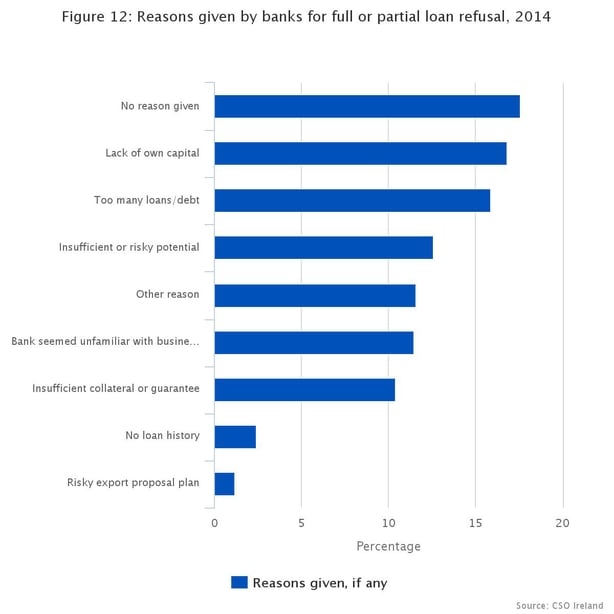The Strategic Banking Corporation of Ireland has today urged Irish SMEs to explore new sources of funding in addition to traditional bank lending.
SBCI's chief executive Nick Ashmore said Irish small and medium sized businesses are more dependent on banks than SMEs in other countries.
He said they should be alert to the increasing number of non-bank funding options that have emerged in recent months.
The SBCI CEO said that Irish SMEs have been paying more to borrow than similar businesses across Europe.
"The SBCI is addressing this by introducing new low-cost, SME-friendly financing options to the Irish market and Irish SMEs should look at the growing number of financing options - both bank and non-bank - to see what best suits their needs", he stressed.
He made his comments after figures from the Central Statistics showed that bank finance was by far the most popular type of finance sought by SMEs.
The SBCI recently teamed up with two non-bank lenders - Finance Ireland and Merrion Fleet - to provide a new range of low-cost SME financing options such as leasing and hire purchase.
Results from CSO's 2014 Access to Finance survey show that bank finance was the most popular type of finance sought.
Over a fifth of all small and medium sized enterprises (SMEs) applied for such finance in 2014.
While 20% of micro sized enterprises applied for bank finance, the rate rose to 35% for small sized enterprises and increased again to 39.8% for medium sized enterprises.
Relatively few SMEs looked for finance from non-bank sources - only 4.7% of medium sized enterprises looked for equity finance compared to 39.8% of similar sized enterprises who looked for bank finance.

Meanwhile, exporting SMEs generally made more applications for bank finance than non-exporting SMEs.
The CSO survey shows that although over 70% of SME bank finance applications were successful, larger SMEs were more successful when applying for bank finance in 2014.
Almost 92% of medium sized enterprises were successful compared to just below 70% of micro sized enterprises.
Exporting SMEs were noticeably more successful than non-exporting SMEs when applying for bank finance; almost 95% of exporting SMEs were successful compared to 67% for non-exporting SMEs.
Notably, the Information and Communications (ICT) sector is less likely to seek bank finance than other sectors, but more likely to be successful when it does.
Only 12.5% of ICT SMEs applied for bank finance in 2014, however, the ICT sector had the highest rate of applications for equity finance across the year at 3.9%.
Financing sources other than bank and equity finance was most prevalent in the construction sector, with 8% of SMEs in this sector applying for other types of finance, such as loans from sources other than banks, leasing, and factoring.Finance application success rates

The ICT sector reported the highest success rate with 84.3% of all bank finance applications approved, followed by the construction sector (73%).
The sector with the highest rate of unsuccessful bank finance applications was the selected services sector, which includes retail, accommodation, food and professional services.
31.6% of applications in this sector did not succeed, and a further 6.6% of applications were only partially successful.
SMEs indicated that they had not received any explanation for the refusal from their bank in 17.6% of cases.

Meanwhile, the lack of own capital was given as the reason in almost 17% of unsuccessful applications, while nearly 16% of SMEs said they were refused as the enterprise already had too much debt.
The Access to Finance survey was first carried out for reference year 2010. The most recent survey was carried out for reference year 2014 for all SMEs.

